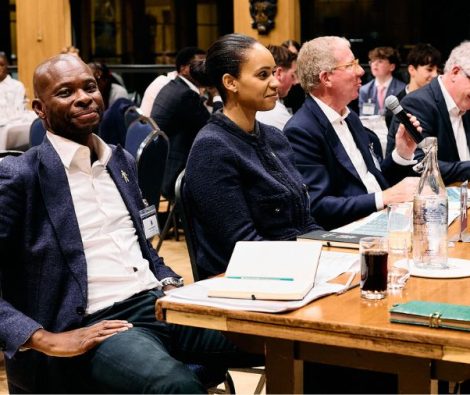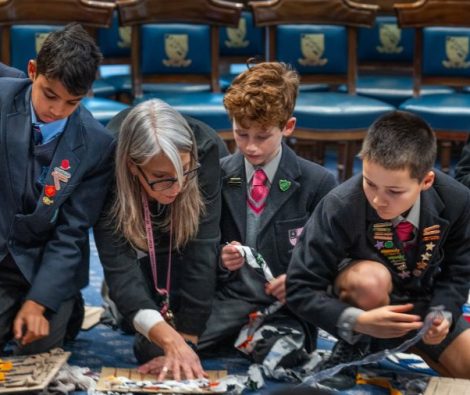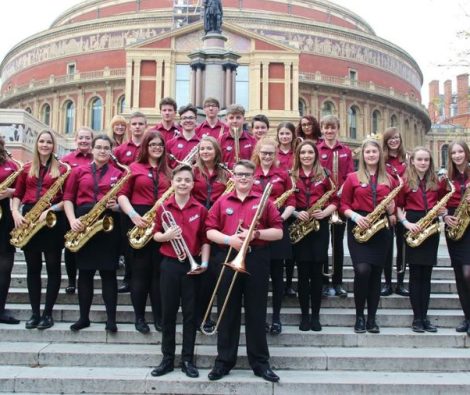By the 16th Century some members of City Livery Companies were not following a career in their trade or mercantile endeavour, but rather in the world of the rapidly growing Tudor theatre.
In fact haberdasher members were a good fit for this as they had excellent company links to supply costumes, stage sets and a wide variety of stage props. As an example of this, we shall consider the theatrical career of Robert Browne and several of his family members who were also members of the company.
This story starts with a little bit of scene setting and an interesting link to Dulwich College via marriage.
Edward Alleyn, who was to be the Founder of Dulwich College in 1605, was born in London in 1566, he was the youngest son of an innkeeper. His father had died when Edward was just four years old. But then shortly afterwards, his mother Margaret Alleyn had married a City of London actor called John Browne, he was a member of the Haberdashers’ Company and made a Freeman in 1588. John had good connections to the theatre world. By growing up in the home of an actor, Edward Alleyn is believed to have absorbed theatre culture.
John Browne’s apprentice master had been his father William Browne (a Freeman of the Haberdashers’ Company in 1534) and this John Browne was also the older brother of the renowned Elizabethan actor Robert Browne (Freeman of the Haberdashers’ Company in 1593) who had himself been apprenticed under one Thomas Alleyn, Haberdasher (Freeman in 1549 and of the same family as Edward Alleyn).
So it was that Robert Browne (b.c.1579 & d. 1603) ran the Boar’s Head Theatre in the City and was married to Susan (later known as Susan Shore Browne Greene Baskerville (sic)) they were the parents of five children, including the actor William Browne, Haberdasher (1602–34). He was also in all likelihood the Robert Browne who was a leader among the acting troupe known as Derby’s Men, and who received payments for Court performances made by Derby’s Men in 1600 and 1601.
On 16 October 1603 there is a record by Joan Alleyn who wrote to her husband Edward Alleyn from London to say that the plague has almost abated, and that all the [acting] companies are returning to London. She also remarks that Robert Browne of the Boar’s Head is dead [of the plague], ‘and died very poor;’ she does not think that he went into the country.
Now the Boar’s Head was first constructed as a late-Elizabethan playhouse and stood just east of the south end of Petticoat Lane.
In 1594 one Jane Poley granted a lease of the Boar’s Head Inn that specified that there must be included the building of a public playhouse. So the lease of the inn was made over to Oliver Woodclief, a Haberdasher’s Company member and financial speculator, for twenty-one years from March 1595.
This required Oliver Woodclief, to spend £100 within seven years building a tiring house (dressing rooms) and stage. Oliver Woodclief, sublet the inn and part of the yard to one Richard Samwell who built narrow galleries north and south, while Oliver Woodclief, built one on the west side and a simple rectangular stage, 40ft by 25ft, in the middle of the yard.
No sooner had it been built than Woodclief, took up with the theatrical entrepreneur, Robert Browne, Haberdasher (as mentioned above, the leader of the Earl of Derby’s men), and a more substantial playhouse was built in 1599, the same year the Globe Theatre was opened at Bankside.
The Earl of Derby’s would usually perform at the Boar’s Head Theatre in the winter season when permitted, but most of the ‘drama’ was taking place in the law courts, where Oliver Woodclief, Robert Browne and Richard Samwell were embroiled in litigation with an investor, Francis Langley, who had hoped to exploit the ambiguous title deeds to the inn and theatre to his own advantage.
Difficulties were compounded by a Privy Council order in 1600 forbidding acting in inns, and matters were further complicated when Robert Browne himself went on tour, subletting his interest in the inn to the Earl of Worcester’s Men. Then in 1603 both Oliver Woodclief, and Robert Browne, who had returned with his players, suing and countersuing one another, were carried off by the plague.
After this the Boar’s Head continued as a playhouse and Robert Browne’s widow, Susan, who held the lease, married Thomas Greene (d. 1612), a member of the Queen’s Men.
The backstage of the theatre and its stage were probably pulled down in 1621 when it was then sold to William Browne, Haberdasher (the late Robert Browne’s son), who already held a house on immediately west of the Boar’s Head Inn.
The eastern galleried range of the theatre survived into the eighteenth century while the Boar’s Head Inn name, like those of many other former inns, endured long after its use ceased.




